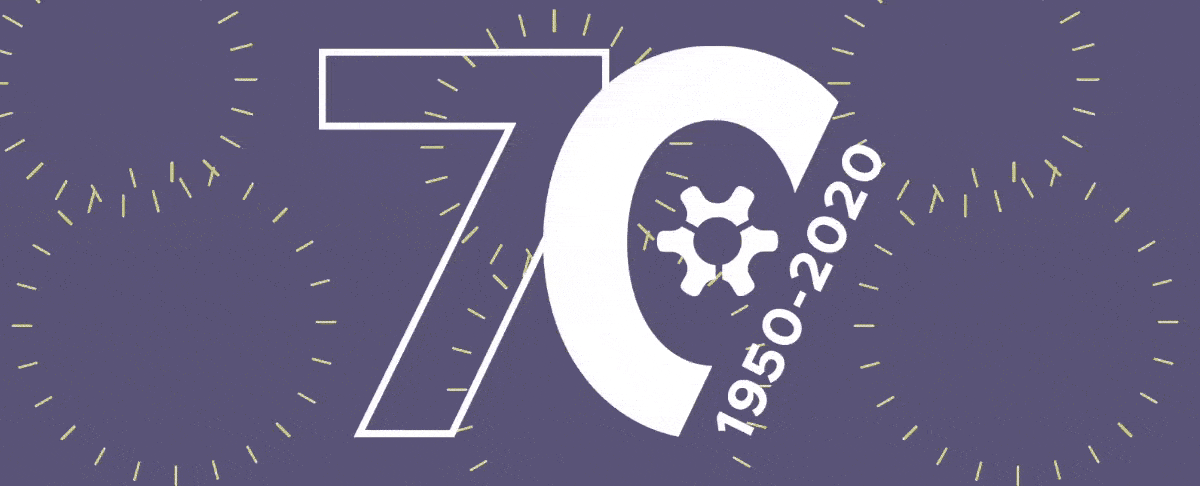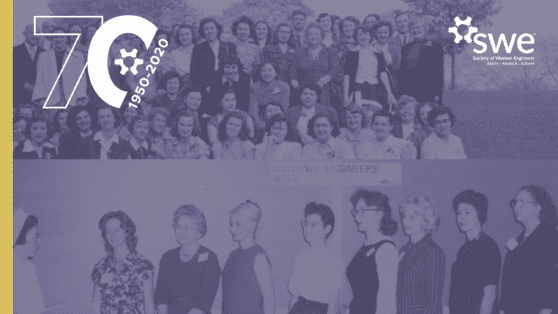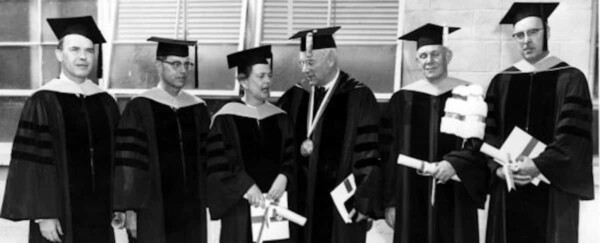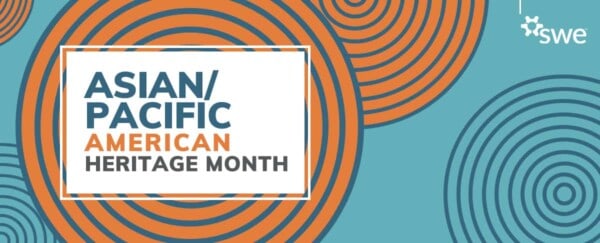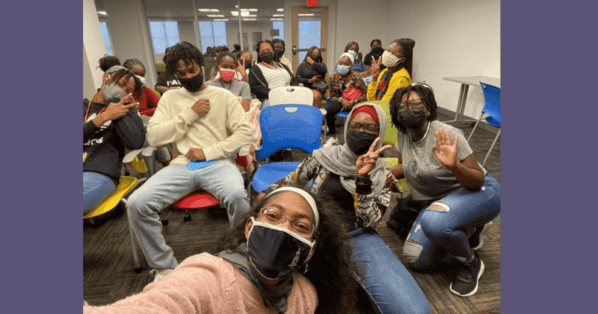The Society of Women Engineers (SWE) has come a long way since its founding meeting on May 27, 1950. So much progress has been made throughout seven decades of SWE, and today, we celebrate the women and society-wide efforts that have made a real difference for women in engineering.
Below, you’ll find our 70th anniversary video and podcast, our 70th anniversary digital jigsaw puzzle, and downloadable 70th anniversary Zoom backgrounds. PLUS, a timeline of 70 years of influential women and groundbreaking milestones!
Celebrating 70 Years of SWE
Enjoy this short video that highlights some of the inspiring women and moments SWE has seen throughout these seven decades.
Tales From the Archives: SWE’s Founding Meeting
SWE Archivist Troy Eller English talks to Anne Perusek, SWE Magazine‘s Director of Editorial and Publications, to bring you “Tales from the Archives,” honoring the women who founded SWE and recounting SWE’s early years, including anecdotes about some of SWE’s first meetings.
1950 Founder’s Meeting Jigsaw Puzzle
Try more 70th anniversary puzzles here!
SWE Zoom Backgrounds
Download this background and more here!
70 Years of SWE: A Timeline
1950 – A National Organization Is Born
On May 27-28, more than 60 women engineers and engineering students arrive at the Green Engineering Camp of The Cooper Union in New Jersey for the first national Society of Women Engineers gathering. Beatrice A. Hicks is elected as the Society’s first president.
1952 – The Awards Recognition Program Is Established
Dr. Mária Telkes receives the SWE Award for Meritorious Contribution of Engineering in recognition of her pioneering work in the utilization of solar energy. The award is soon renamed the SWE Achievement Award. This marks the beginning of SWE’s individual awards program, which has recognized the outstanding contributions of more than 1100 individuals since 1952.
1958 – SWE Awards Its First Scholarship
The first SWE scholarship, named for SWE honorary member Lillian Moller Gilbreth, is awarded to Phyllis S. Gaylard of the University of California at Los Angeles. Gaylard goes on to become a Fellow of SWE and recipient of the Distinguished Service Award. Since 1958, SWE has awarded more than 4,600 scholarships.
1960 – SWE Has 650 Members
The Society is comprised of 16 professional sections, nine student sections, and has over 650 members, including almost 200 collegiate members.
1963 – SWE Publishes a Profile of a Woman Engineer
Fulfilling one of SWE’s founding objectives to serve as a center of information on women in engineering, the statistics committee surveys the SWE membership and publishes its first Profile of a Woman Engineer. The report finds that “The average woman engineer of today is between 36 and 37 years old. She is equally likely to be married or single, but if married she has three children. She is employed by industry and earns a median salary of between 9 and 10 thousand dollars per year. A college graduate, she has a bachelor’s degree in engineering or one of the physical sciences and either has a graduate degree or has taken specialized training related to her work. She is a member of one or more of the technical societies. She is unlikely to be a licensed professional engineer.” SWE updates the Profile multiple times over the next 20 years, tracing the changes in the “typical” woman engineer as young women surge into the profession in the 1970s.
1964 – SWE Hosts the 1st International Conference of Women Engineers and Scientists
SWE hosts the first International Conference of Women Engineers and Scientists (lCWES) in New York City, which draws over 500 participants from 35 countries. In conjunction with the event, “Women Engineers and Scientists Day” is held at the New York World’s Fair on June 15. As a result of the success of the first ICWES, attendees pass a resolution to hold ICWES conferences every three years.
1970 – SWE Has 1,100 Members
The Society has 17 professional sections, 31 student sections, and just over 1,100 members, including 371 collegiate members.
1971 – SWE Launches Professional Development Conferences
Beginning in 1971, SWE and the Engineering Foundation co-sponsor a series of four annual Women in Engineering professional development conferences at New England College in Henniker, New Hampshire. These professional development conferences lay the groundwork for SWE’s later upward mobility and leadership conferences and retreats from the 1980s through today. (maybe show a photo from Exxec too?)
1976 – Men Are Admitted as Full Members
After reconsidering the Society’s own practices in light of the Education Amendments of 1972 and Title IX legislation, on June 26, 1976 the Council of Section Representatives votes to replace the word “woman” with “person” in its membership bylaws, allowing men to join SWE with the full rights and privileges of the membership grade in which they are eligible.
1980 – SWE Has 9,600 Members
The Society has 40 professional sections, 154 student sections, and over 9,600 members, including almost 6,800 students. The Society has grown 870% in just 10 years. Student membership has increased more than 1800%.
1984 – SWE Reorganizes to Meet Its Growing Challenge
SWE’s volunteers and 4-person clerical staff struggled to maintain core communications, operations, and services after the Society’s rapid expansion in the 1970s. The Council of Section Representatives (now Senate) establishes regions across the United States to distribute the workload and ease communications.
(The regions were dissolved 33 years later in 2018, when technologies and an expanded professional headquarters staff neutralized the communications and administration challenges that served as the original rationale for regions.)
1988 – SWE Expands Outreach with NASA Grant
After receiving a grant from NASA to encourage young women and underrepresented minority students to pursue careers in engineering, SWE launches its Higher Education Outreach Program (HEOP), Big Sister program, and NASA Space Camp.
1990 – SWE Has More Than 13,000 Members
1993 – SWE Publishes Breakthrough Survey
SWE publishes A National Survey of Women and Men Engineers: A Study of 22 Engineering Societies. It is the result of four years of work on the part of SWE’s statistics committee and the cooperation of 21 other engineering societies. The following year, in 1994, past president F. Suzanne Jenniches and SWE member Patricia Eng testify before the United States Congress on the findings of the study and the Society’s position statement in support of the Gender Equity in Education Act (GEEA). The statement is distributed to members of Congress, other technical and professional societies, and to the media.
1998 – SWE Sponsors a House Bill
SWE sponsors a House bill to establish the Congressional Commission on the Advancement of Women and Minorities in Science, Engineering and Technology (CAWMSET). The next year, members convene with participants from academia, industry, engineering societies, foundations, and women’s organizations at the National Academy of Engineering’s Summit on Women in Engineering in Washington, D.C.
2000 – The Society Has More Than 14,000 Members
2003 – SWE Establishes Corporate Partnership Council
SWE’s Corporate Partnership Council is launched, facilitating collaboration between the Society and its staunchest corporate partners to more effectively promote a positive image of engineering, advance women in engineering and technology, and recognize the achievements of their contributions. Two years later, SWE and the CPC commissioned a study exploring the factors influencing the retention of women engineers in the workforce.
2006 – SWE Surges into Outreach
SWE launches its “Wow! That’s Engineering” outreach program aimed at K-12 girls. In the next four years, SWE also launches 3D-WIT (Develop, Design, Discover–Women Innovating with Technology), SASS-E Girlz (The Skills. The Attitude. The Science. The Smarts…for Engineering), and in 2010, its Invent It. Build It. mega outreach event at the annual conference.
2009 – SWE Becomes a Prominent Presence on Capitol Hill
Following a 2005 partnership with ASME enabling the society to hire a public policy representative in Washington, D.C. and issuing its first public policy position paper a year later, SWE members are invited to testify before Congress several times and in 2009 seven SWE members and SWE’s public policy representative participate in Congressional Visits Day, speaking to their legislators about Title IX’s application to STEM fields.
2010 – SWE Has Over 18,000 Members.
2012 – SWE Grows Its International Presence
Sixty years after SWE gained its first international member, the Society significantly expands its programming beyond the U.S. borders, with professional development conferences in Germany and Japan, a symposium in India, a primary school outreach project in Nigeria, and the formation an international collegiate interest group at Koç University in Istanbul, Turkey.
2015 – SWE Welcomes K-12 Students
SWE expands its educational outreach by creating SWENext for girls 18 and younger, guiding them to a future career in engineering through SWENext clubs, comic books, Design Lab events, leadership development, and awards and scholarships.
2020 – SWE Has More Than 42,000 Members
SWE has more than 42,000 members. What will they accomplish next?
Want more?
For more great history, check out the “We Built This” book we made for SWE’s 65th Anniversary:
Author
-

SWE Blog provides up-to-date information and news about the Society and how our members are making a difference every day. You’ll find stories about SWE members, engineering, technology, and other STEM-related topics.

